Unveil the New You with Southern
Cosmetic Laser

As Charleston's top medical aesthetics and cosmetic dermatology practice, we believe that everyone deserves to love the way they look. At the end of the day, the only opinion that matters about your well-being and appearance is yours. That's why our team is committed to providing you with the most affordable, effective medical cosmetic Services in Charleston - so you can live your best life without compromise. We treat men and women of all ages and ethnicities.
Founded in 2007, Southern Cosmetic Laser has evolved into a multi-specialty practice offering the latest medical aesthetics and laser skin Services in Charleston, SC. If you are wanting the most advanced, highest-level of service, you have come to the right place.
Our services start and end with the client in mind. At Southern Cosmetic Laser, we strive to exceed our customer's expectations with every service we offer, whether it's laser skin rejuvenation, laser hair removal, anti-aging skincare, or fillers for wrinkles. We combine years of experience, the latest technologies, techniques, and personalized services to ensure your visit is pleasurable, informative, and private.
When you choose Southern Cosmetic Laser, you, the customer comes first. We take a client-centered approach to everything we do, meaning we're happy to discuss available treatment options with you. We'll weigh the pros and cons of each procedure with your needs in mind, ensuring your treatment is effective. We believe that an informed client is a happier client, and we're not shy about educating you on the tools we use and the Services we individually customize.
Whether you're looking to completely transform your appearance or simply get a healthier glow, we are here to help. Our team tailors the appropriate laser treatment or medical aesthetic service to achieve your desired results, not somebody else's. Combined with the safest, most medically-approved procedures and products, you'll love the way you look when you leave Southern Cosmetic Laser.
Laser Skin Services
Services
- Unveil the New You with Southern Cosmetic Laser
- Innovative Laser Skin Services in Charleston, SC
- Skin Rejuvenation in Charleston, SC
- Skincare Injectables and Fillers in Charleston, SC
- Anti-Aging Injectable Services in Charleston, SC
- Laser Tattoo Removal in Charleston, SC
- Professional and Efficient from First Encounter
Services Area

Your trust, confidence, and satisfaction are our highest priorities - no if's, and's, or but's.
Some of our most popular services include:
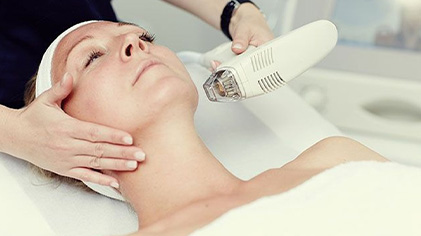
Laser Skin Services
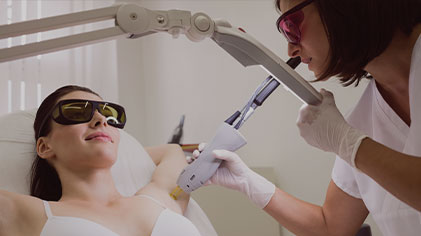
Laser Hair Removal
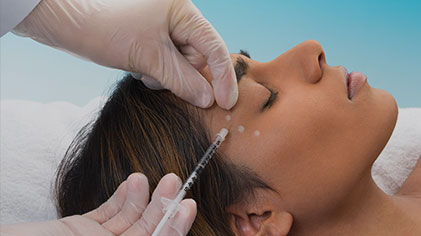
Botox

Facials
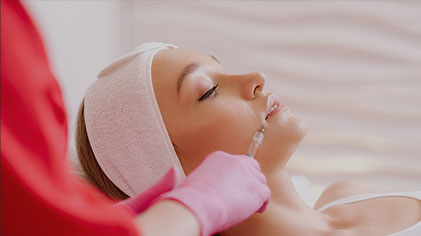
Dermal Fillers
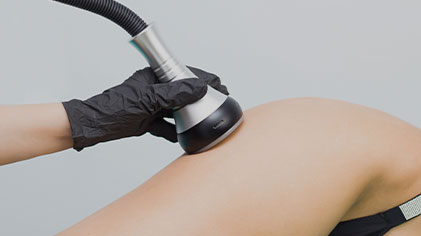
Body Sculpting
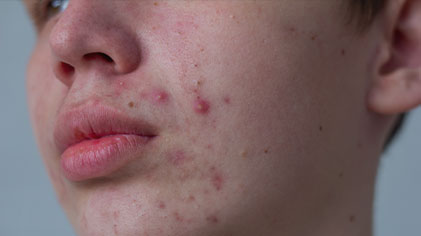
Services for Acne and Acne Scarring
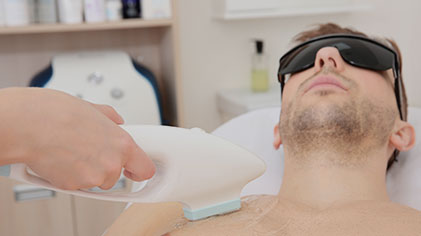
Men's Services

Tattoo Removal
For More Information, Call Us
 843-277-2240
843-277-2240

Innovative Laser Skin Services
in Charleston, SC
If you have never had a laser skin treatment before, it might seem like a scary proposition at first. However, as many of our patients will tell you, procedures like laser hair removal can be life-changing. Laser skin services are not only effective - they're growing in popularity. According to a study, nearly 4.1 million laser skin services were performed in 2019. Whether you're looking to remove unwanted hair or achieve a more unified skin tone, laser services can help.
Some of the most requested laser skin services at Southern Cosmetic Laser include:
Laser Hair Removal in Charleston, SC
Unwanted hair. You know it's there, and just about every day, you've got to shave, pluck, and tweeze your way to removing it. But what if we told you there was a permanent solution to reduce your unwanted hair problem?
At Southern Cosmetic Laser, our laser hair removal services target hair follicles giving your skin the smooth, silky feel you've may desire. Laser hair removal services save you time in shaving - a proposition that seemed impossible a few years ago.
Using the most up-to-date lasers for our services, we offer a permanent hair-reduction solution for all skin types, making it a quick, effective treatment for any ethnicity. Our state-of-the-art laser technologies emit a laser beam that penetrates your hair follicles, destroying the root while preserving your skin.
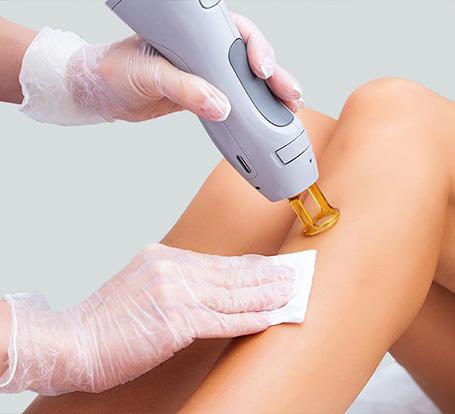
Our clients are ditching their razors and choosing our lasers to remove hair from their bikini lines, underarms,
upper lips, legs, arms, face, chest and back.
A few benefits of laser hair removal include:
- Eliminate Stubborn, Unwanted Hair
- Prevent Ingrown Hairs
- Quick and Effective
- Remove Bumps, Stubble, Irritation, and Razor Burn
- Smooth, Glassy Skin That You Will Love
- Affordable Plans from Southern Cosmetic Laser
If this is your first foray into laser hair removal services, you're probably wondering how it all works.
Don't worry; we've got you covered!
What is Laser Hair Removal?
Laser hair removal is a medical procedure that uses a laser, or concentrated beam of light, to remove unwanted hair on your body. During our laser hair removal services, the light from the laser is absorbed by the melanin in your hair. That light is then converted to heat, which damages your hair follicles, preventing future hair growth. Most laser hair removal services are quick and can be completed in about 30 minutes. This treatment can be accomplished during a lunch break or quickly after work.
What Happens During Laser Hair Removal Treatment?
Southern Cosmetic Laser hair removal involves several steps. Once you schedule an appointment, you will need to shave prior to your treatment. You will need to avoid plucking, waxing, threading and depilatory creams at least three weeks prior to treatment. During your day of treatment, the following will occur:
- Clean the treatment area to kill germs and bacteria
- Provide you with protective goggles or glasses to wear.
- Commence laser hair removal treatment using our cutting-edge lasers.
- A topical cooling product such as aloe may be applied after the treatment.
- Send you on your way feeling smooth and satisfied.
How Many Sessions Will I Need?
Services usually require an average of six to eight sessions with periodic touchups. However, sessions vary depending on your schedule and the area of your body that needs treatment. You may need more services on areas where hair grows quickly, like your upper lip. Some areas, like places on your back, will not require as many laser treatment sessions.
Skin Rejuvenation in Charleston, SC
We offer the most advanced skin rejuvenation services for all skin types for both men and women. We believe in these 3 Basic Principles of Aging!
- Skin Integrity
- Toxins
- Dermal Fillers
At Southern Cosmetic Laser we can't turn back the hands of time, but we've seen by applying these three steps in a systematic approach you can achieve long lasting, amazing more youthful results. You may even have people say to you, "Wow, you look amazing! What's your secret?"
Natural aging and a lifetime of involuntary facial muscle actions contribute to the formation of tiny wrinkles, creases and fine lines that can make you look angry, tired or older than you feel. Over time skin loses volume, collagen and elastin and can become thinner and begin to sag.
At Southern Cosmetic Laser, our skin rejuvenation services are some of the most popular laser skin services offered. Skin rejuvenation is a non-surgical treatment that helps you look as vibrant as you feel. Unlike traditional cosmetic surgeries, proper skin rejuvenation doesn't require you to put your skin or health at risk to achieve beautiful results. Instead, our skin rejuvenation options are safe and offer multiple benefits for people suffering from skin defects like scarring, acne and aging.
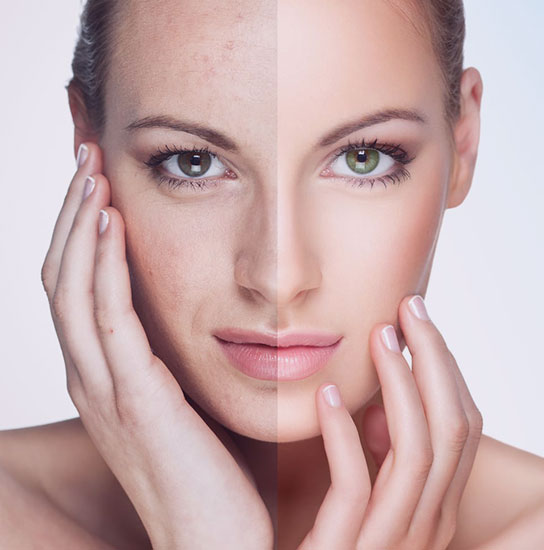
We can rejuvenate your skin using a variety of laser skin services in Charleston, including resurfacing, energy-based laser tightening and lifting, and other laser-based services.
There are numerous benefits to skin rejuvenation, including:
- Reduction of Wrinkles & Fine Lines
- Diminished Sunspots
- Acne Suppression
- Improvement of Acne Scars
- Redness and Rosacea Relief
Contact our office today to learn which one of our cutting-edge skin rejuvenation services is best for your lifestyle.

Skincare Injectables and Fillers
in Charleston, SC
Dermal fillers have changed the face of the medical cosmetic industry. About 10 million dermal services are applied every year. Fillers are used in shaping the face, lifting, volumizing and minimizing wrinkles. Fillers replace fat and bone less, lift and support. When combined with laser skin services and neurotoxins our patients can stick to an easy regimen that helps them maintain gorgeous, smooth skin.
How Do Dermal Fillers Work?
Many of our patients know they want anti-aging services like fillers to help smooth out wrinkles and help lift. However, they don't know how dermal fillers, or injectables, work.
As people age, they lose collagen, elastin, and perhaps more importantly, hyaluronic acid. Hyaluronic acid helps retain moisture in your skin. Injectables that utilize hyaluronic acid and other substances help replace lost moisture, resulting in fuller, more radiant skin. Injectables and fillers can also help add extra volume to your lips and cheeks and firm up saggy skin.
Often, our patients see results after a single treatment, which can last as long as 9 to 18 months. Our patients choose Southern Cosmetic Laser because our fillers give a natural-looking result without affecting facial expressions, making for a discreet yet effective treatment.
Where Are Injectables Used?
We discuss and explain various types of fillers and decide which is best for you.
At Southern Cosmetic Laser, we offer personalized filler services for a number of problem areas, such as:
- Marionette Lines: These lines go directly down from the corners of your mouth and become more pronounced over time as your face loses volume.
- Cheeks: As you age, your cheeks lose volume, making you look gaunt and elderly. Our fillers plump up your cheeks, giving you a more youthful look without plastic surgery.
- Lips: Plumping up our patient's lips is one of our most popular injectable skincare services in Charleston. Our lip filler services are customized to each patient's preference, meaning we can help with subtle enhancements or obvious upgrades.
- Jaw and jawline areas.
Anti-Aging Injectable Services in Charleston, SC
Finding the right filler can be confusing, but our experienced medical team will work with you to discover the best treatment options for your goals. Some of our most popular injectable services include:
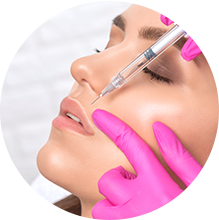
Dermal Fillers: Products such as Juvederm XC, Radiesse, Bellafill and Restylane are used for facial lifting and contouring. They are great for filling in thin lips, tightening saggy skin, helping with skin laxity, and more.

Botox: Botox and similar products like Jeuveau, Dysport, and Xeomin are wrinkle-smoothing neuromodulators that treat horizontal lines across the forehead. They are also very effective at reducing crow's feet and perpendicular frown lines between your eyebrows and other areas.
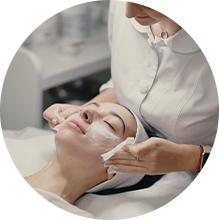
Nova Threads: This is another non-surgical option that can create an immediate facelift, which tightens and smooths your skin. Products like Nova Lyft and Nova Mesh are excellent if you have saggy skin, thin lips, or need collagen stimulation. We help you decided which is best for your face and skin type.

B12 Shots: B12 works wonderfully and promotes the growth of healthy skin cells, which repair damaged skin. Aging and certain medical conditions affect your body's ability to absorb B12, leaving you tired and forgetful. Regular B12 injections from Southern Cosmetic Laser help your body absorb the B12 it needs. That way, you're more alert during the day and benefit from healthier skin, nails, and hair.
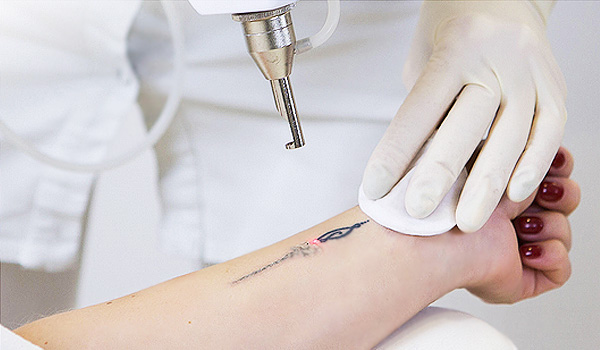
Laser Tattoo Removal in Charleston, SC
Getting a tattoo is an art. Removing a tattoo is another art. There are numerous variables that are considered in laser tattoo removal. Southern Cosmetic Laser is compassionate in helping rid those unwanted tattoos. We use superior technologies to customize services for the patient and their tattoo. We work with clients to provide optimal outcomes at affordable, comparable pricing. We want to spend your money wisely and want to achieve the best outcome possible with minimal services.
Professional and Efficient from First Encounter
From anti-aging fillers for your lips to precise laser hair removal along your bikini line, Southern Cosmetic Laser has the team and tools to serve you with excellence. When it comes to cosmetic dermatology and medical aesthetics, we take pride in our experience and passion. We provide more than quick, effective services - we give our patients a relaxing, comforting experience catered to their needs. Our unparalleled customer service and state-of-the-art laser skin services in Charleston, SC, keeps our clients coming back.
We know that aging is inevitable, but that doesn't mean you have to succumb to the aging process. Call or click today to learn more about the Southern Cosmetic Laser difference and how we have thrived for over 18 years as Charleston's premier skincare and anti-aging treatment center.
 843-277-2240
843-277-2240
Book Appointment
Latest News in Charleston, SC
Editorial: The best answer to Charleston's worsening congestion isn't more roads — or bridges
THE EDITORIAL STAFFhttps://www.postandcourier.com/opinion/editorials/ravenel-bridge-charleston-sc-transit/article_6f1f8dcc-0198-11ef-b2e0-07d0c451b891.html
Well, that didn't take long. Less than 20 years after South Carolina's largest, widest and most costly bridge was built over the Cooper River, some are asking whether it's large and strong enough to handle its increasing traffic flow.As The Post and Courier's Eva Herscowitz noted in a recent article, "Can the Ravenel bridge handle more traffic?" the num...
Well, that didn't take long. Less than 20 years after South Carolina's largest, widest and most costly bridge was built over the Cooper River, some are asking whether it's large and strong enough to handle its increasing traffic flow.
As The Post and Courier's Eva Herscowitz noted in a recent article, "Can the Ravenel bridge handle more traffic?" the number of cars and trucks crossing the Arthur Ravenel Jr. Bridge has swollen from about 75,500 a day when it opened in 2006 to about 94,400 a day in 2022, the most recent year for which the state has data. And while these growing numbers pose no immediate structural threat to the cable-stayed bridge that defines the Lowcountry skyline, it's increasingly common for traffic to slow to a crawl during peak morning and evening hours — or whenever there's a significant accident.
It's yet another sign that leaders across the Charleston region need to plan for better ways for our growing population to get around town. Specifically, it's time to begin planning for bus rapid transit that would run east-west across the metro region.
The north-south line has been in the works for years: The Lowcountry Rapid Transit line will run 21.3 miles between downtown Charleston and the Ladson fairgrounds, and unlike our region's existing bus service, these new buses will travel at least part of the time in dedicated lanes, avoid significant delays by requiring passengers to pay in advance and even be able to change traffic lights. All those features promise to make the transit line run faster than regular traffic, increasing its appeal and ridership.
Unfortunately, it takes years to develop a new bus rapid transit line because with federal funding (the Federal Transit Administration is paying 60% of the cost) comes federal red tape. The Charleston Area Regional Transportation Authority has been working on the rapid transit line since 2016, when Charleston County voters approved money for it as part of a sales tax extension. Since then, the cost projection has almost doubled, from $360 million to $625 million, and the start of construction is still about two years away. If all goes well, the line is expected to start running by 2029.
That's why CARTA officials and local mayors and councils should start discussing the next line, which would serve West Ashley and Mount Pleasant, as well as a potential northern spur along U.S. Highway 52 toward Goose Creek and beyond.
After all, financing and constructing another bridge alongside the Ravenel Bridge would be far more expensive and might not even be doable, given the intense level of new development near where the span touches down on both sides. In fact, the difficulty of building another bridge or widening the existing one is another example of how hard it has become to build our way out of congestion problems. And then there are the neighboring residents who understandably object to the idea of living near wider, faster, noisier highways, or having their homes taken to accommodate road construction.
Building a better, more expansive bus rapid transit network would take some time and significant political cooperation, as this service would have to span many council districts, municipalities, even counties to work as it should. For just a small fraction of the more than $2 billion some Charleston County Council members hope to spend on a highly controversial highway extension, we could pivot and make a significant down payment on a new way to get around. A more robust public transportation network wouldn't serve as a magic wand that makes our traffic problems vanish, but it would help us make more efficient use of the roads we have and slow the pace at which congestion worsens, all while preserving and protecting our special sense of place.
Will the Charleston region's new set of leaders work together on a new vision or pursue more of the same?
Parking space crisis, rethink Columbus Street Terminal use, Ride the Lowcountry | Letters
From Our Post and Courier Readershttps://www.postandcourier.com/opinion/letters_to_editor/opinion-letters-parking-space-crisis-columbus-street-terminal/article_cc19eb98-f285-11ee-9866-e73da747c8ef.html
I write in response to the April 19 editorial and my own experiences concerning downtown Charleston parking garages.I used to love parking at the Wentworth Street garage. I live downtown and could always find a parking space. I could be shopping on King Street within 10 minutes. But not now.I recently drove along Beaufain Street to th...
I write in response to the April 19 editorial and my own experiences concerning downtown Charleston parking garages.
I used to love parking at the Wentworth Street garage. I live downtown and could always find a parking space. I could be shopping on King Street within 10 minutes. But not now.
I recently drove along Beaufain Street to the garage behind Target since the Wentworth garage was closed.
It had a sign indicating the lot was full, and a man waved me off.
There was no available parking on the streets, especially since it was the beginning of high tourist season, so I had to return home.
I had planned to shop on King Street. This has likely happened to others, and I believe that merchants must be losing business.
On my birthday, my daughter planned to take me to lunch at 82 Queen. We planned to park across the street in the garage.
But you guessed it. The garage was full.
We didn’t know what to do, so finally we had to park several blocks away at my church and walk. This was very stressful as it was supposed to be a special day.
In addition to the millions of annual visitors to Charleston, many people are moving here every day.
The editorial was right when it called the closing of the Wentworth garage a major livability issue. I believe we are near a crisis point with this situation.
I contacted Charleston Mayor William Cogswell’s office but had not heard back as of Thursday afternoon.
If anyone else feels this is a problem in our beloved Charleston, I urge you to call the mayor as well. And I have a request: Could the city make the Wentworth garage taller so more cars could park there?
ANGELA MCLESTER
Charleston
A recent commentary from State Ports Authority CEO Barbara Melvin and SPA Board Chairman Bill Stern rebutted the idea of eventually selling the Columbus Street Terminal and moving port operations up the Cooper River by extolling the virtues of the property’s current use.
What they failed to acknowledge were all of the current and future drawbacks to the continued use of this land for port activity.
While having a port here made sense many years ago, the city has grown around the port.
Now, anyone driving down East Bay Street or coming from the pedestrian path on the Ravenel Bridge is treated to a massive concrete parking lot and chain-link fence that impedes harbor access and provides a view of giant cranes and thousands of parked cars.
With the ever-growing threat of sea level rise potentially inundating the newly produced BMWs sitting in this giant parking lot, isn’t it time for port leadership to at least start planning for the eventual relocation and opening up the property to a much better use for the benefit of the city and its citizens?
The expansion of port property on the Cooper River and the replacement of the Don Holt Bridge should help facilitate this move.
BURT HODGES
Mount Pleasant
Coastal Cyclists, a local bicycle club in the Charleston area, hosted the annual Ride the Lowcountry this month to raise money in support of cycling advocacy, primarily Palmetto Cycling Coalition and Charleston Moves.
This year, about 600 cyclists participated.
To avoid crashes and possible injuries, we requested that the S.C. Department of Transportation fill potholes and cracks in the roads that we travel, many of which might not be noticed by a car but could easily cause a cyclist to fall.
Abbi Rajabi and his DOT staff responded to our request. We would like to acknowledge the work done on the many miles of roads prior to our event that resulted in a ride with no injuries from road conditions.
We appreciate this cooperative and effective relationship that has helped us have a safe and successful event.
BOB MARKISELLO
Past Coastal Cyclists president and director
Ride the Lowcountry
Mount Pleasant
What’s on your mind? Join our community conversations and let your voice be heard by writing a letter to the editor. Letters can be a maximum of 250 words and are subject to editing for clarity, tone and libel. They must include the writer’s name and city for publication and a daytime telephone number for verification. Email your submissions to letters@postandcourier.com or fill out the form on our online portal.
Get a weekly recap of South Carolina opinion and analysis from The Post and Courier in your inbox on Monday evenings.
The Gaillard Center Presents: Idina Menzel – Take Me or Leave Me
Charleston Businesshttps://charlestonbusiness.com/communitycalendar/the-gaillard-center-presents-idina-menzel-take-me-or-leave-me/
DetailsThe tour will feature fan favorites from throughout Idina Menzel’s illustrious career, showcasing iconic hits from Wicked, Rent, and newer music from her electrifying dance album, Drama Queen, which was released this past Summer.Menzel recently finished a month-long run of her new musical production, Redwood, at the La Jolla Playhouse in California. The production released a live track of the production called “Great Escape” as the world’s first listen to the music from the show, which features ...
Details
The tour will feature fan favorites from throughout Idina Menzel’s illustrious career, showcasing iconic hits from Wicked, Rent, and newer music from her electrifying dance album, Drama Queen, which was released this past Summer.
Menzel recently finished a month-long run of her new musical production, Redwood, at the La Jolla Playhouse in California. The production released a live track of the production called “Great Escape” as the world’s first listen to the music from the show, which features new original musical co-conceived by Idina and Tina Landau, with music by Kate Diaz and lyrics by Diaz and Landau, and book and direction by Landau.
Menzel is a Tony-Award winning, powerhouse multi-hyphenate: a singer, an actress in film and TV, a songwriter, a Broadway star, and a philanthropist. She rose to fame for her role as Maureen in the popular Broadway musical Rent, and her career took off when she won a Tony Award for her role as Elphaba, the Wicked Witch of the West, in the smash musical Wicked.
Her voice can be heard as Elsa in Disney’s Oscar® winning Frozen, the second highest grossing animated films of all time, with more than $1.2 billion in worldwide box office revenue. The film’s song “Let It Go”, voiced by Menzel, became an instant international phenomenon, winning the Oscar® for Best Original Song–where Menzel performed it at the ceremony–and the Grammy® Award for Best Song Written for Visual Media. The track reached #5 on the Billboard Hot 100, making Menzel the first artist with both a Billboard Top 10 hit and a Tony Award for acting. Menzel received the Breakthrough Artist of the Year Award at Billboard’s annual Women in Music event in 2014 and performed the National Anthem at Super Bowl XLIX.
A skillful songwriter, Menzel’s prolific recording career includes multiple cast albums and the solo albums: Still I Can’t Be Still, Here, I Stand and idina, which landed in the Top 30 on Billboard’s Top 200 charts upon its release in 2016. She’s released 2 holiday-themed albums, Holiday Wishes, which debuted at #1 on Billboard’s Holiday Albums chart and gave Menzel a Top 10 album on the Billboard Top 200 Album Chart and its 2019 follow-up, Christmas: A Season of Love featuring duets with Ariana Grande, Billy Porter, Josh Gad and Idina’s husband, Aaron Lohr.
This past fall, Menzel released her electrifying dance project Drama Queen via BMG. The project is a departure from what she’s released in the past, as Menzel showcases her powerhouse vocals through disco-infused beats and soaring anthems. Idina worked with award-winning collaborators including Nile Rodgers (Chic, Diana Ross, Beyonce), Justin Tranter (Lady Gaga, Selena Gomez), Jake Shears (Scissor Sisters), Sir Nolan (Shawn Mendes, Carly Rae Jepsen), Jim Eliot (Elie Goulding, Kylie Minogue) and more.
Menzel has also released two children’s picture books alongside her sister, Cara Mentzel, called “Loud Mouse,” and “Proud Mouse” via Disney Publishing Worldwide. Both books center around self-acceptance and being true to yourself.
Lost lineage comes to life with new resource at Intl. African American Museum
Shelbey Robertshttps://www.live5news.com/2024/04/25/lost-lineage-comes-life-with-new-resource-intl-african-american-museum/
CHARLESTON, S.C. (WCSC) - A new resource at the International African American Museum is helping some families trace their family lines more easily.Lost lineage is coming to life at the Center for Family History at the International African American Museum.Brian Sheffey is the director for the museum’s Center for Family History. He’s one of the four staff members working to help families discover their lost lineage, especially for Black Americans.“It is an important journey and I think it’s really...
CHARLESTON, S.C. (WCSC) - A new resource at the International African American Museum is helping some families trace their family lines more easily.
Lost lineage is coming to life at the Center for Family History at the International African American Museum.
Brian Sheffey is the director for the museum’s Center for Family History. He’s one of the four staff members working to help families discover their lost lineage, especially for Black Americans.
“It is an important journey and I think it’s really important in terms of developing our sense of self and our sense of identity. And for African-Americans specifically, understanding just how long our bloodlines have actually been in this country,” Sheffey said.
For many Black Americans, the quest to uncover ancestry is layered; centuries of slavery separated generations of families. So re-establishing roots can be difficult, but not impossible, Sheffey said.
“There is this very stubborn myth and it even gets repeated by some Black genealogists and researchers that we can’t research our people beyond 1870 and that’s so untrue,” he said.
Recently, the center launched its new Genealogy Research Area and Reference Library. There, visitors will find kiosks and iPad stations loaded with subscriptions to genealogy and historical websites.
“Vital records, things like birth records, marriage records, Christening records, baptism records and we also go over when these records first started because every county is a little bit different. Every state was different,” Sheffey said.
The library houses more than 1,000 books all focused on how to start the process of finding family members. The resources help create, collect and showcase Black experiences.
“The Center for Family History is all about those individual stories. All the stories that you see, all the stories that people find while they’re here, those are the little individual pebbles that feed all the way into the main gallery,” he said.
Sheffey hopes those who visit the Center for Family History will feel empowered in their identities.
“My voice should count as much as anyone else’s talking about what is an American, what isn’t American and who should be included — the narratives about the founding of this country,” Sheffey said.
Copyright 2024 WCSC. All rights reserved.
South Carolina Public Radio and College of Charleston announce “Teachable Moments”
Landon Mastershttps://www.scetv.org/stories/2024/south-carolina-public-radio-and-college-charleston-announce-teachable-moments
New radio segment Teachable Moments with College of Charleston’s Dr. Rénard Harris offers insights for students and parentsSouth Carolina Public Radio (SC Public Radio) and the College of Charleston are proud to announce a partnership aimed at delivering concise, impactful insights tailored for both students and parents. The one-minute radio segment, Teachable Moments...
New radio segment Teachable Moments with College of Charleston’s Dr. Rénard Harris offers insights for students and parents
South Carolina Public Radio (SC Public Radio) and the College of Charleston are proud to announce a partnership aimed at delivering concise, impactful insights tailored for both students and parents. The one-minute radio segment, Teachable Moments, is designed as a platform to address pressing educational issues dedicated to offering valuable perspectives to listeners.
From the prevalence of cellphones in classrooms to the intricacies of homework management, mental health awareness and combating childhood obesity, each episode of Teachable Moments shares a concise yet comprehensive exploration of pertinent issues. Listeners can expect an array of discussions, from practical tips for fostering academic success to insights on promoting holistic well-being. Through Teachable Moments, host Dr. Rénard Harris aims to bridge the gap between educators, parents and students, fostering a collaborative environment conducive to learning and growth.
Dr. Harris is an Associate Professor of Management in the School of Business at the College of Charleston. He holds an Ed.D in teacher education. Since his time at the College of Charleston and several years prior, he has explored multicultural education, diversity, equity and inclusion, storytelling, cultural relevance and leadership. He is often called upon to serve as a keynote speaker, inclusion facilitator and consultant for businesses and educational institutions.
The collaboration between SC Public Radio and the College of Charleston underscores the shared vision of fostering community engagement and advancing educational initiatives.
Tune in to Teachable Moments on SC Public Radio every Friday during Morning Edition and All Things Considered.
QUOTES
“SC Public Radio is excited to unveil this collaboration with the College of Charleston. Teachable Moments represents a step forward in our efforts to elevate educational discourse and empower our community with valuable insights. Through engaging discussions and thought-provoking content, we aim to ignite a passion for learning and foster meaningful connections between educators, parents and students.” –SCETV President and CEO Adrienne Fairwell
“The College of Charleston is excited to work with SCETV, a fellow state agency that provides a great service to the people of South Carolina. This new partnership provides a wonderful opportunity for our university to share timely and helpful content to SCETV listeners and puts a spotlight on what we, as an institution, do best: teach.” –College of Charleston President Dr. Andrew Hsu
“I love being the host of Teachable Moments. The engaging topics give the listeners something to think about, tilt their head about, and smile about. Ultimately, we get to add some good to folks’ days.” –Teachable Moments Host and College of Charleston Professor Dr. Rénard Harris
“Teachable Moments aims to deliver impactful insights and spark meaningful conversations about pressing educational topics. Through this partnership, we are dedicated to providing our listeners with a platform where they can gain valuable perspectives, practical tips and evidence-based solutions to navigate the challenges of modern education.” –Director of SC Public Radio Sean Birch
About South Carolina ETV and Public RadioSouth Carolina ETV and Public Radio (SCETV) is the state's public educational broadcasting network. SCETV amplifies South Carolina voices, provides educational experiences and strengthens communities, while working toward creating a stronger, more connected and informed South Carolina. In addition to airing local programs, such as Carolina Classrooms, Making It Grow, and This Week in South Carolina, SCETV also presents multiple programs to regional and national audiences, including By The River, After Action, Reconnecting Roots, Reel South, Somewhere South, Yoga in Practice, Downing of a Flag and How She Rolls. In addition, SC Public Radio produces the national radio production, Chamber Music from Spoleto Festival USA.
About the College of CharlestonLocated in the heart of historic Charleston, South Carolina, the College of Charleston is a nationally recognized, public liberal arts and sciences university. Founded in 1770, the College is among the nation’s top universities for quality education, student life and affordability. Its beautiful and historic campus, combined with contemporary facilities, cutting-edge programs and accessible faculty, attracts students from across the U.S. and around the world.
Media Contacts:Landon Mastersmedia@scetv.org803-737-3337
Amy Stockwellstockwellal@cofc.edu(843) 207-6355
Disclaimer:
